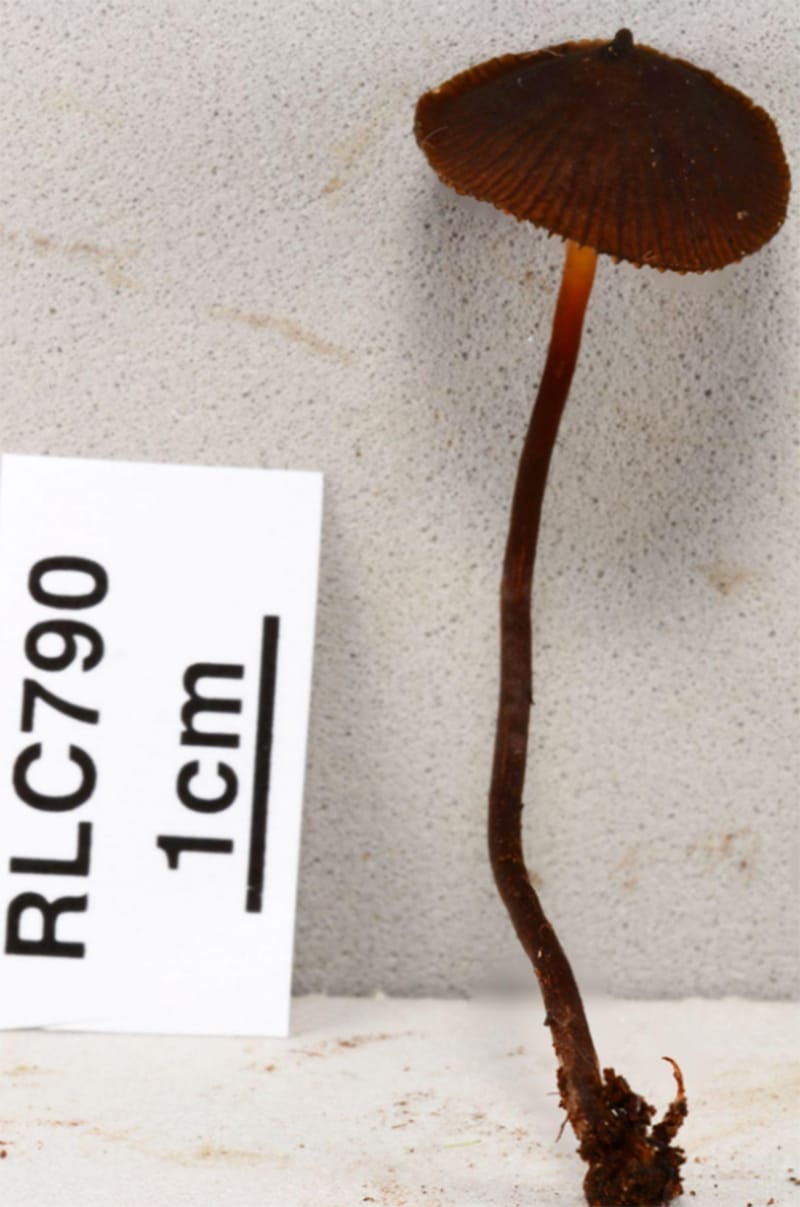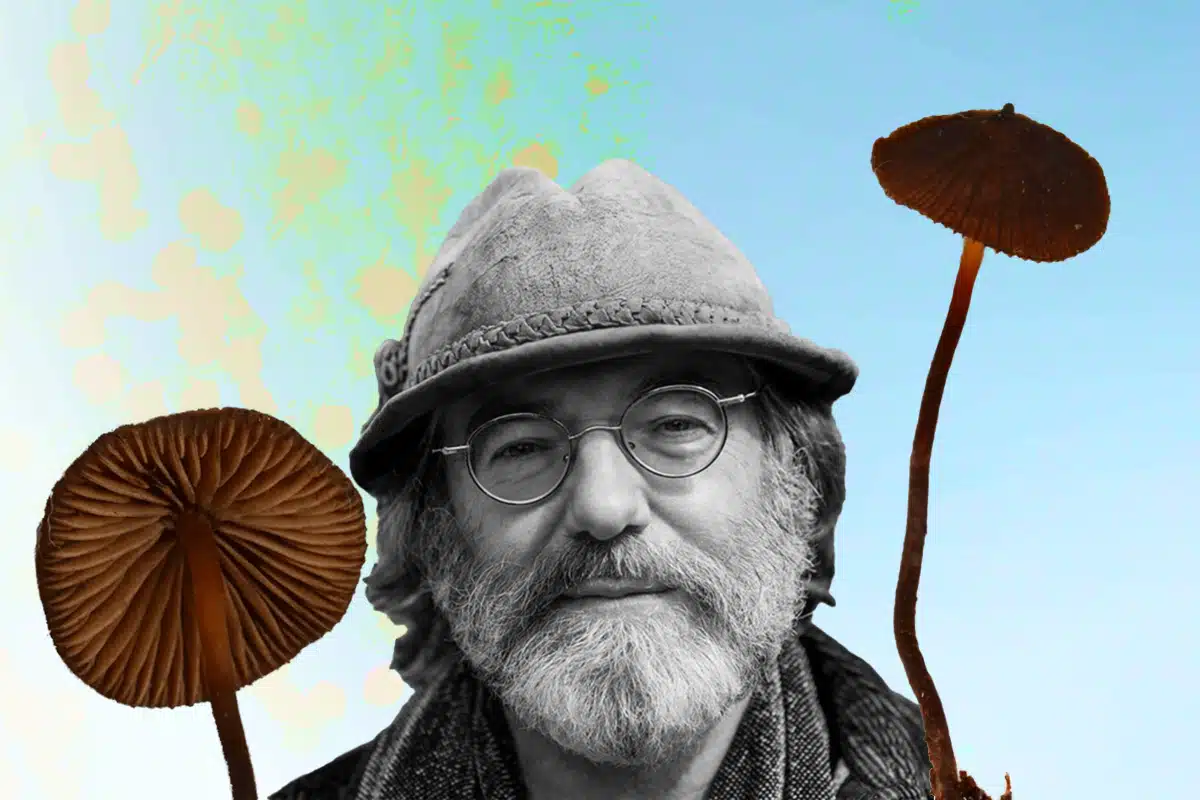Anyone who’s spent a minute in the mushroom community will have heard of Paul Stamets. Stamets is a mostly self-taught mycologist who has published six mycology books, starting in 1978 that have inspired untold numbers of people to take up hobbies and pursue careers in studying fungi. As well as being heavily featured in the Fantastic Fungi documentary and Michael Pollan’s How To Change Your Mind, Stamets is also the only mycologist to have been portrayed as a fictional character on Star Trek: Discovery.
It seems like Stamets should have had a mushroom named after him long ago, given his contributions to mycology and many pop culture accolades—but it’s just happened for the first time. World, say hello to Psilocybe stametsii.

Meet Psilocybe stametsii
To date, Psilocybe stametsii has been discovered twice; once in 2011 by researchers Bryn Dentinger and Thomas S. Jenkinson, and again in 2022 by mycologist Giuliana Furci and nature writer Robert Macfarlane and musician Cosmo Sheldrake. Both times Psilocybe stametsii was discovered in the Los Cedros Biological Reserve, in the cloud forests of the Imbabura province of Ecuador.
Despite being discovered twice by two different search parties over ten years apart, scientific tradition usually awards the privilege of naming a newly discovered species to those who take the time to record the characteristics of their discovered species and publish their work in a research paper. In this case, it was Guiliana Furci and Bryn Dentinger who recently published the finding and chose the name to honor Stamets.
Paul Stamets Immortalised as a Mushroom
Furci set up the world’s first NGO for fungi in 2012. Much like Stamets, she taught herself mycology while studying aquaculture at the Universidad de Los Lagos in Osorno, Chile. Giuliana met Stamets in 2005 when she took one of his cultivation classes, and the two have been friends ever since.
“It is an absolute joy to be able to honor Paul Stamets with a new species of mushroom.” said Guiliana, “His contribution to the global appreciation of fungi is undisputed and unparalleled, and his relentless dedication to advancing mycology has inspired thousands of people around the world for decades, including myself.”
READ: Types of Magic Mushrooms: 10 Shroom Strains You Should Know About

This year Stamets joins the ranks of mycologists who have garnered enough respect to have been immortalized with a mushroom namesake. Within the Psilocybe genus Stamets joins mycologists such as John Allen (Psilocybe allenii), Roger Heim (Psilocybe heimii), and Daniel Stuntz (Psilocybe stuntzii). Stamets himself named Psilocybe weili after holistic doctor Andrew Weil in 1996, who also wrote the foreword for Stamets’s book published in the same year “Psilocybin Mushrooms of the World”. Unfortunately, this name didn’t stick, as Psilocybe weili was later found to be Psilocybe caerulescens which was discovered and named in 1923.
When asked about this new mycological discovery, Stamets said:
How to Grow Shrooms Bundle
Take Both of Our Courses and Save $90!
“I am deeply honored by this recognition—and excited to go on a field expedition to see this species in its natural habitat. To be recognized like this is the greatest honor that a mycologist can receive, and that two renowned mycologists co-authored this discovery deepens my appreciation. I also feel a keen responsibility to further protect the mycodiversity of fungi in all their wondrous forms. They are truly fantastic!”
READ: How To Identify Magic Mushrooms

Compared to plants, only a tiny proportion of the world’s fungi are documented by scientists, so Paul’s feelings of responsibility to protect mycodiversity are ones we should all share. Whether as decomposers of dead plants, symbiotic co-operators in living systems, or as important global carbon sinks, it’s clear that fungi are often overlooked compared to plants and animals. Mycological discoveries like Psilocybe stametsii and the work of those studying fungi make sure fungi stay on the biodiversity agenda and inspire other would-be mycologists to keep advancing our knowledge of fungi.
What Does Psilocybe stametsii Look Like?
Growing to around 1¾ inches (4.5 cm) tall with a cap about ½ inch (1.5 cm) across, Psilocybe stametsii is a small, delicate-looking mushroom. The sharply pointed cap of this mushroom is somewhat reminiscent of Stamets own emblematic amadou hat, starting off a dark brown at the center, giving way to a brownish-cream towards its flared and sometimes frilly edges. The stem of Psilocybe stametsii is equally as delicate as the cap, showing a slightly frosted appearance. Each time it’s been found growing a single mushroom, barely conspicuous against a background of soil and rotting leaves.

Does Psilocybe stametsii contain psilocybin?
It’s not clear at this stage whether Psilocybe stametsii contains any psychedelic alkaloids. With only two mushrooms of this species ever found to date, it may take a few more discoveries before Psilocybe stametsii is tested for its chemical profile.

DoubleBlind is a trusted resource for news, evidence-based education, and reporting on psychedelics. We work with leading medical professionals, scientific researchers, journalists, mycologists, indigenous stewards, and cultural pioneers. Read about our editorial policy and fact-checking process here.

DoubleBlind Magazine does not encourage or condone any illegal activities, including but not limited to the use of illegal substances. We do not provide mental health, clinical, or medical services. We are not a substitute for medical, psychological, or psychiatric diagnosis, treatment, or advice. If you are in a crisis or if you or any other person may be in danger or experiencing a mental health emergency, immediately call 911 or your local emergency resources. If you are considering suicide, please call 988 to connect with the National Suicide Prevention Lifeline.



